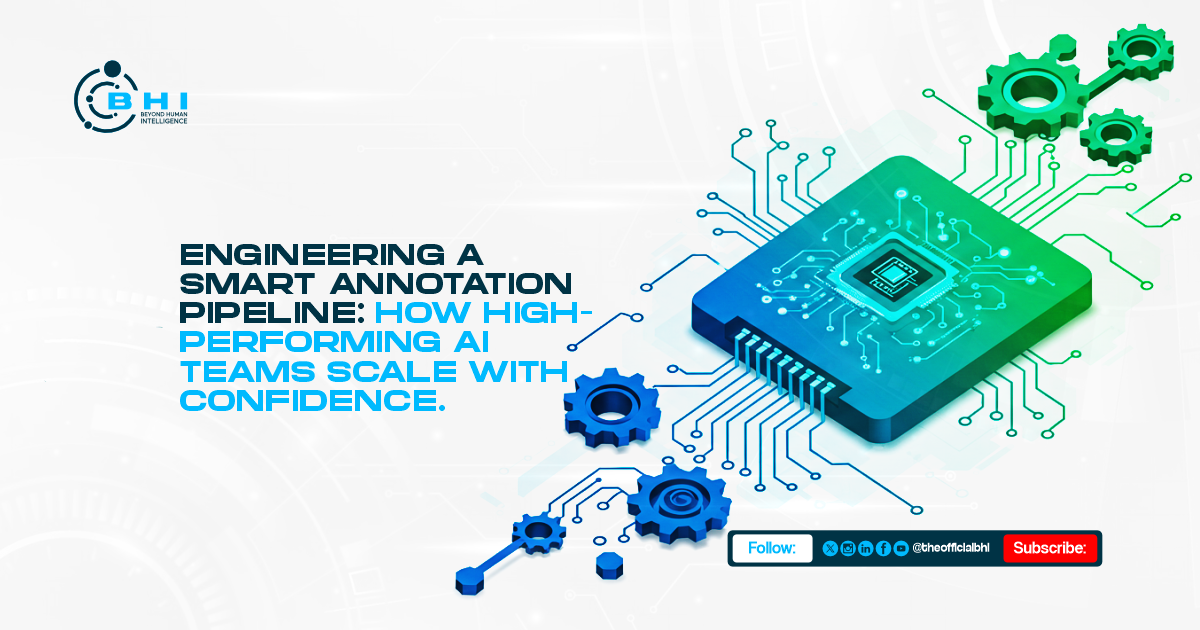Ikeja, Lagos, Nigeria

Data fuels machine learning. But it’s not just data—it’s the right data, labelled with consistency, accuracy, and context. And that doesn’t happen by chance.
It happens with a structured, scalable annotation pipeline that aligns with your model’s goals, adapts to changing demands, and minimises errors before they hit your training loop.
In this post, you’ll learn how to build a smart data annotation pipeline that supports AI success, from startup to enterprise scale.
🔍 Why Annotation Workflows Should Be Treated Like Core Infrastructure
Too many AI teams see annotation as a task to “get through”—but the smartest teams treat it as critical infrastructure.
Here’s why:
- 60–80% of your AI build time is spent gathering, cleaning, and labelling data
- Poor annotation = poor training data = poor models
- Every mislabeled example compounds bias and error
The bottom line? Smart AI starts with smart annotation workflows.
🔧 The 6 Pillars of a High-Quality Annotation Pipeline
Let’s walk through the architecture of a reliable, efficient annotation process:
1. Intake & Curation: Start with Strong Data
- Gather representative, diverse data
- Remove noise, duplicates, and off-topic records.
- Standardise formats, redact sensitive info, and check balance across classes.
Why it matters: Bad data in = flawed insights out. Every smart pipeline starts with intentional curation.
2. Label Schema Design: Clarity Before Clicks
Before anyone starts annotating, define:
- Label taxonomy
- Handling overlaps and edge cases
- Instructions with visuals and examples
- Clear success criteria
Why it matters: Vague label definitions are the root cause of low inter-annotator agreement and poor model performance.
3. Annotator Onboarding: Don’t Just Assign—Enable
Whether it’s internal or outsourced teams, annotators must be trained to:
- Understand the domain
- Handle ambiguity
- Follow labelling rules consistently.y
- Use tools efficiently
Why it matters: The fastest way to lose quality is skipping onboarding. Train your annotators like you train your models.
4. Platform & Tools: Equip for Scale
Use annotation platforms that support:
- Text, image, video, audio, or multimodal inputs
- Built-in QA, comments, and versioning
- Custom workflows and integrations
- Secure, collaborative environments
Why it matters: The right tool doesn’t just make labelling easier, it makes scaling smarter.
5. QA & Feedback Loops: Quality is a Continuous Layer
Embed quality checks throughout:
- Gold standard benchmarks
- Real-time review cycles
- Annotator scoring dashboards
- Model feedback → annotation refinement
Why it matters: The best pipelines are not just fast—they’re self-improving.
6. Iteration & Reporting: Build, Measure, Adapt
Set up:
- Weekly or sprint-based QA reviews
- Error analysis by label class
- Performance feedback between the model and data teams
- Clear reporting to track progress and blockers
Why it matters: Iteration closes the loop, turning a workflow into a system.
⚠️ Common Pitfalls to Avoid
Avoid these to maintain quality and momentum:
- ✅ Undefined label guidelines
- ✅ No QA loop or benchmarks
- ✅ Manual-only workflows that don’t scale
- ✅ Annotators left unsupported or undertrained
- ✅ Overlooking edge case handling or data drift
Annotation is where model risk starts—or where model confidence begins.
🚀 How BHI Helps You Build a Smarter Pipeline
At Beyond Human Intelligence (BHI), we work with startups, scale-ups, and established AI teams to architect annotation operations that:
- Support high-volume, multi-format tasks
- Adapt to changing requirements with tool-agnostic flexibility.
- Integrate human and AI feedback loops.
- Deliver trained annotators, robust QA, and secure workflow.s
- Offer transparent reporting, so your team stays informed and in control.l
We don’t just label—we help you engineer the system behind your labels.
🧩 Final Thought: Model Performance Starts at the Label
Your models will only be as good as the data that trains them.
And your data will only be as good as the system that produces it.
Annotation isn’t a step—it’s a cycle. One that needs structure, quality control, and iteration to serve your AI goals at scale.
If your team is ready to stop firefighting and start engineering smarter data pipelines, we’re here to help.
Need a scalable, structured, high-quality annotation process?
Let BHI support your team with the right people, tools, and workflows.
👉 Request a workflow consultation or test our team with a sample project.
